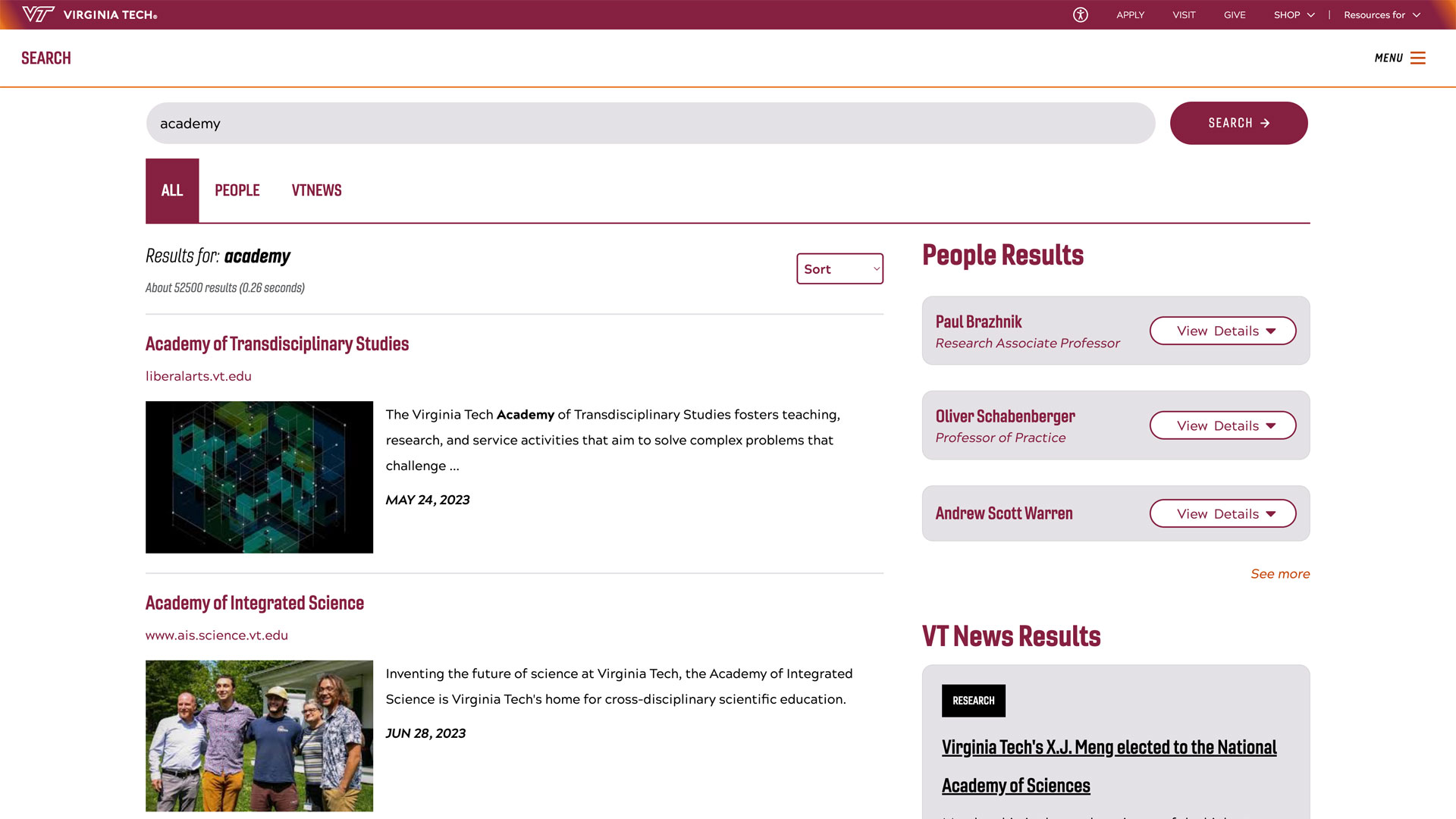One in 10 Americans is living with a rare disease
On Rare Disease Day, we recognize Virginia Tech researchers working to identify, treat, and support patients diagnosed with conditions that individually affect 200,000 or fewer in the U.S.

Rare Disease Day is observed on Feb. 28 — always the last day in February.
The Wells Fargo Tower in downtown Roanoke will be illuminated with a show of pink, green, purple, and blue, the colors of Rare Disease Day, in a joint effort by The Fralin Biomedical Research Institute at VTC and Wells Fargo Tower to shine a light on important but uncommon diseases.
A condition is considered rare when it affects patient populations of 200,000 or less. Collectively, however, the National Institutes of Health reports that rare diseases affect about 30 million people in the United States — almost one in 10 Americans, as well as having major impacts on their families.
Although they are described as rare, these disorders touch thousands of families in Virginia, including in the Roanoke and New River valleys.
Michael Friedlander, Virginia Tech’s vice president for health sciences and technology and executive director of the Fralin Biomedical Research Institute, serves on the Virginia Department of Health’s Rare Disease Council. The council advises the General Assembly and the Office of the Governor on the needs of individuals with rare diseases and their families and caregivers.
While caregivers and families need immediate support, Friedlander said Virginia Tech’s health science researchers also want to better understand the causes and mechanisms of many rare diseases to improve diagnoses and develop new treatmenets.
“We are working across disciplines, with partner institutions, and coordinating our work with scientists across the globe,” he said.
Fewer than 500 of over 7,000 rare diseases have Food and Drug Administration-approved treatments. Because the number of people affected by any one diagnosis is small, there is little economic incentive to invest the millions of dollars needed to develop effective therapies.
“While few may have heard of these diseases, they touch us all,” Friedlander said. “Research into these less common illnesses expands our understanding of human health, often leading to discoveries and therapies for more common diseases, as well.”
Here are some of the scientists working on rare and uncommon diseases at Virginia Tech:
- John Chappell studies Von Hippel-Lindau disease, an inherited disorder characterized by the abnormal growth of both benign and cancerous tumors and cysts that affects fewer than 50,000 people in the U.S. Chappell is an associate professor at the Fralin Biomedical Research Institute.
- In the Neuromotor Research Clinic, Fralin Biomedical Research Institute Professor Sharon Ramey and Associate Professor Stephanie DeLuca have developed and refined therapies to treat neuromotor movement disorders. The team has adapted the therapy developed to help children and young adults with cerebral palsy for patients with rare diseases that affect neuromotor skills, such as some CASK-related disorders.
- Deborah Good and her lab in the College of Agriculture and Life Sciences’ Department of Human Nutrition, Foods, and Exercise conduct research into Prader-Willi Syndrome, which affects fewer than 50,000 people in the U.S. Her work on the syndrome, symptoms of which may start to appear in pregnancy and in newborns and can affect many parts of the body, has led to two U.S. and one international patents and formation of the Good Foods Group LLC.
- Robert W. Grange, professor of human nutrition, foods, and exercise and director of the Virginia Tech Metabolism Core, is focused on the role of exercise in treating neuromuscular disease. That includes the its role in such rare illnesses as Duchenne muscular dystrophy that affects fewer than 50,000 in the U.S., X-linked myotubular myopathy that affects fewer than 5,000, and Facioscapulohumeral dystrophy that affects fewer than 50,000.
- Anthony-Samuel LaMantia, professor and director of the Fralin Biomedical Research Institute’s Center for Neurobiology Research, investigates DiGeorge syndrome, a disorder that occurs when a small part of chromosome 22 is missing. It affects 1 in 4,000 people.
- Xin M. Luo, professor of immunology in the Virginia-Maryland College of Veterinary Medicine’s Department of Biomedical Sciences and Pathobiology, studies systemic lupus erythematosus. Women of childbearing age are at greatest risk for the chronic autoimmune disease. Luo is working to better understand the disease and its prevalence, which is estimated to affect between 161,000 and 322,000 people.
- Sumita Mishra, assistant professor at the Fralin Biomedical Research Institute, is investigating a cardiac disorder as part of her research into metabolic health. Fabry disease, a diagnosis shared by fewer than 5,000 people in the U.S., affects the body's ability to break down specific fatty substances.
- Michelle Olsen, professor of neuroscience in the College of Science, studies Rett Syndrome. The neurodevelopmental disorder primarily affects girls, with fewer than 50,000 diagnosed cases in the U.S. A characteristic symptom is repetitive hand movements.
- Steven Poelzing, professor at the Fralin Biomedical Research Institute, studies how faulty sodium channels influence cardiac function and heart rhythms. Fewer than 200,000 Americans are living with Brugada syndrome, which can cause sudden cardiac death. The lab also researches rare disorders such as oculodentodigital dysplasia dominant, Long QT syndrome 3, arrhythmogenic cardiomyopathy, and Lenegre disease.
- Assistant Professor Ryan Purcell of the Fralin Biomedical Research Institute examines the molecular mechanisms of neuropsychiatric disease risk, which will provide insights for novel strategies to address a number of rare genetic syndromes.
- Nick Rider is a data scientist and clinical immunologist with Carilion Clinic and a professor in the Virginia Tech Carilion School of Medicine. Rider focuses on building computational tools to quantify various aspects of the epidemiology, clinical journey, biology and clinical outcomes for patients with inborn errors of immunity, which are caused by damaging variants in single genes. These conditions are individually rare: In aggregate there are fewer than 250,000 patients.
- Sharon Swanger, a Fralin Biomedical Research Institute assistant professor, studies the molecular mechanisms that underlie seizure disorders. That includes research into Dravet syndrome, a rare and catastrophic seizure disorder that affects fewer than 50,000 people in the U.S. Symptoms can appear in infancy.
- Associate Professor Matt Weston examines childhood seizure disorders, including a number of developmental and epileptic encephalopathy disorders affecting small patient populations.
- Meike van der Heijden, an assistant professor at the Fralin Biomedical Research Institute, studies how cerebellar circuits mature during brain development. Her work on the cerebellum helps inform a better understanding of rare diseases such as spinocerebellar ataxia and dystonia.
- Yassine Sassi, a Fralin Biomedical Research Institute assistant professor, is focused on identifying new therapies for cardiovascular and pulmonary diseases. His team studies pulmonary arterial hypertension, which affects fewer than 50,000 in the U.S., and pulmonary fibrosis, which affects about 200,000 people in the U.S.
Cancer is another area of focus at Virginia Tech. Nearly 1 in 8 adult cancer patients in the U.S. have a rare form of cancer. They can be challenging to identify, often resulting in delayed diagnosis after symptom onset. Even after diagnosis, treatment options and clinical trials are more limited.
Glioblastoma affects fewer than 50,000 patients in the United States. Several teams of Fralin Biomedical Research Institute faculty are targeting aggressive brain cancers, as well as other types of cancer.
- Assistant Professor Samy Lamouille is testing a novel therapeutic approach to eradicate glioblastoma cancer stem cells. Acomhal, a cancer research startup company he co-founded with Professor Robert Gourdie, shows potential in providing therapy for aggressive cancers such as glioblastoma and triple negative breast cancer.
Professor Christopher Hourigan, director of the institute’s Cancer Research Center in Washington, D.C., focuses on a high-risk form of blood cancer called acute myeloid leukemia, which annually affects about 20,000 Americans. He looks at reasons for why some people survive cancer while others end up dying, even though initially they seem to have had the same response to treatment.
- On the Children’s National Research & Innovation Campus in Washington, D.C., Assistant Professor Kathleen Mulvaney investigates malignant peripheral nerve sheath tumors, which affect fewer than 50,000 patents in the U.S. Symptoms can appear in infancy.
- Professor Jennifer Munson has developed a novel 3D tissue-engineered model of the glioblastoma microenvironment to help learn why the tumors return and how best to eradicate them. She and collaborators founded a company, Cairina Inc., to provide personalized treatment and improve outcomes for patients with aggressive gliomas.
- Assistant Professor Zhi Sheng is exploring new therapies for glioblastoma multiforme.
- Fewer than 1 percent of children with diffuse midline pontine glioma, an aggressive form of pediatric brain cancer, are still alive within five years of diagnosis. At the Children’s National Research & Innovation Campus, Assistant Professor Jia-Ray Yu, is investigating the biology of two enzymes that show promise as targets for combination therapies to treat pediatric brain cancer. His lab also investigates how these enzymes are involved in Sotos and Rauch-Steindl syndromes, two rare pediatric developmental disorders with no cures.
- Also in Washington, D.C., Assistant Professor Cheng-Chia “Fred” Wu is exploring the use of focused ultrasound and convection-enhanced delivery to treat pediatric patients with rare pediatric brain tumors.




